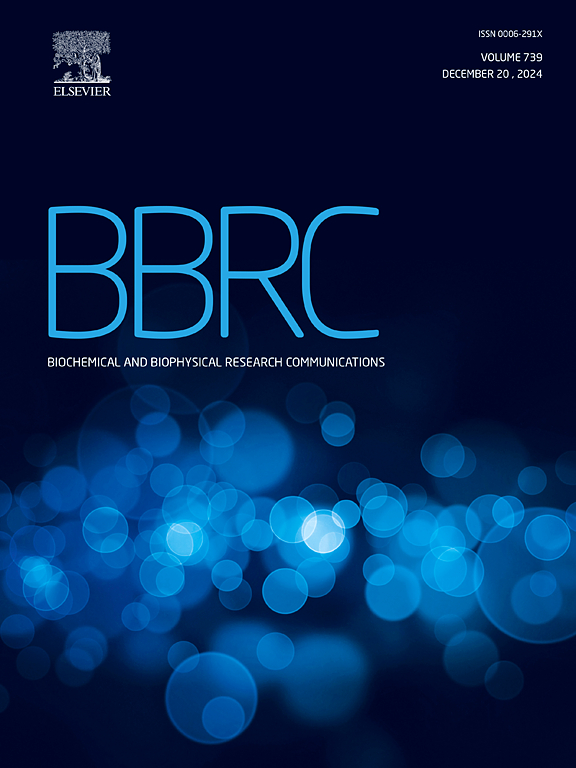底物选择性的结构基础和人类胆碱磷酸转移酶的进化见解
IF 2.5
3区 生物学
Q3 BIOCHEMISTRY & MOLECULAR BIOLOGY
Biochemical and biophysical research communications
Pub Date : 2025-05-24
DOI:10.1016/j.bbrc.2025.152082
引用次数: 0
摘要
磷脂酰胆碱(PC)和磷脂酰乙醇胺(PE)是维持真核生物膜结构和功能的核心磷脂,主要通过肯尼迪途径合成。该途径的最后一步由胆碱磷酸转移酶1 (CHPT1)和胆碱乙醇胺磷酸转移酶1 (CEPT1)催化。值得注意的是,尽管这些酶具有高度的序列同源性,但CHPT1特异性地合成PC,而CEPT1同时催化PC和PE的产生,并且这种底物选择性的机制尚不清楚。在这里,我们报道了3.7 Å人类CHPT1 (hCHPT1)的低温电镜结构,揭示了一个同型二聚体,其中每个单体由n端结构域,催化结构域和二聚化结构域组成。通过结构和序列分析,以及生化表征,我们确定了催化域中调节底物选择性的重要残基。此外,跨物种序列比对表明,卵细胞CHPT1与CEPT1保留了重要的底物选择性残基。这种残基的保守性可能使卵旁体CHPT1具有与CEPT1相当的催化双功能。这些发现不仅阐明了CHPT1和CEPT1之间底物选择性的结构基础,而且为磷脂合酶适应提供了新的进化视角。本文章由计算机程序翻译,如有差异,请以英文原文为准。
Structural basis for substrate selectivity and evolutionary insights into human choline phosphotransferase 1
Phosphatidylcholine (PC) and phosphatidylethanolamine (PE), the core phospholipids maintaining eukaryotic membrane structure and function, are predominantly synthesized through the Kennedy pathway. The final step of this pathway is catalyzed by choline phosphotransferase 1 (CHPT1) and choline ethanolamine phosphotransferase 1 (CEPT1). Notably, although these enzymes show high sequence homology, CHPT1 specifically synthesizes PC while CEPT1 catalyzes both PC and PE production, and the mechanism of this substrate selectivity remains unclear. Here, we report the 3.7 Å cryo-EM structure of human CHPT1 (hCHPT1), revealing a homodimer in which each monomer consists of an N-terminal domain, a catalytic domain, and a dimerization domain. Through structural and sequence analyses, along with biochemical characterizations, we identified important residues in the catalytic domain that regulate substrate selectivity. Moreover, cross-species sequence alignment showed ovipara CHPT1 conserves important substrate selectivity residues with CEPT1. This residues conservation may endow ovipara CHPT1 with catalytic bifunctionality comparable to CEPT1. These findings not only elucidate the structural basis for substrate selectivity between CHPT1 and CEPT1, but also provide novel evolutionary perspectives on phospholipid synthase adaptation.
求助全文
通过发布文献求助,成功后即可免费获取论文全文。
去求助
来源期刊
CiteScore
6.10
自引率
0.00%
发文量
1400
审稿时长
14 days
期刊介绍:
Biochemical and Biophysical Research Communications is the premier international journal devoted to the very rapid dissemination of timely and significant experimental results in diverse fields of biological research. The development of the "Breakthroughs and Views" section brings the minireview format to the journal, and issues often contain collections of special interest manuscripts. BBRC is published weekly (52 issues/year).Research Areas now include: Biochemistry; biophysics; cell biology; developmental biology; immunology
; molecular biology; neurobiology; plant biology and proteomics

 求助内容:
求助内容: 应助结果提醒方式:
应助结果提醒方式:


